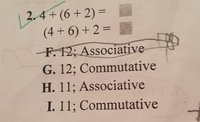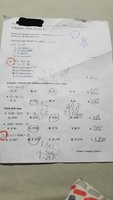Wow. Ok thanks. They expect a 9 year old to get this? I'm 38 I'm either really dumb or ok I'm really dumb ... But still I can hardly wrap my head around what you just said. I get the idea. But to apply it literally is beyond my grasp
You are not dumb. The curriculum is.
In learning arithmetic, what is important to understand is that the order in which you
add or
multiply two numbers makes no difference.
[MATH]7 + 2 = 9 = 2 + 7 \text { and } 7 * 2 = 14 = 2 * 7.[/MATH]
That is not true for subtraction and division.
[MATH]7 - 2 = 5 \text { but } 2 - 7 \text { does not equal } 5.[/MATH]
The purpose of parentheses is to specify the order in which things are done. You do what is in parentheses first. But if
all you are doing is adding or multiplying, order does not matter, and so parentheses do not matter.
[MATH]7 + (2 + 11) = 7 + 13 = 20 \text { and } (7 + 2) + 11 = 9 + 11 = 20.[/MATH]
In addition and multiplication, order does not matter (commutative law).
In addition and multiplication, parentheses do not matter (associative law).
In subtraction and division, order does matter, and so parentheses matter. They are not commutative and not associative.
When does order matter and when does it not matter. That is what 9 year olds need to know, not the technical names used to specify those facts.



